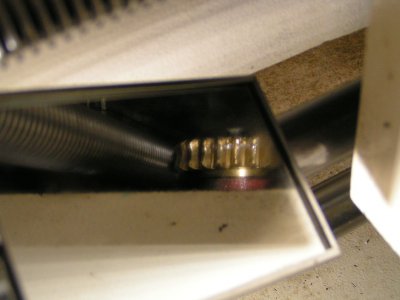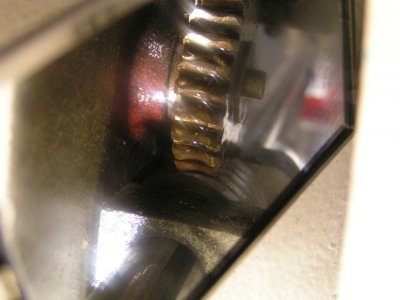- Joined
- Jan 14, 2013
- Messages
- 290
(Moderators, please post where you think it's needed).
Many lathe owners will oil their machines using the owners manual and let it go at that.
However, there are many places that are not covered in the manual that get over looked through lack of knowledge about the machine and/or not understanding what is going on behind the covers. Example: The feed rod drives a worm that drives a worm gear that drives the carriage and all this is hidden between the carriage and the bed and often goes over looked. Due to the lack of lubrication this will start to give problems that are hard to isolate such as a binding, jerking of the carriage leading to a bad surface finish which is often hard to see at a glance and even more difficult to diagnose and that will drive you nuts. Below is a photo of the gears that need lubrication.

Many lathe owners will oil their machines using the owners manual and let it go at that.
However, there are many places that are not covered in the manual that get over looked through lack of knowledge about the machine and/or not understanding what is going on behind the covers. Example: The feed rod drives a worm that drives a worm gear that drives the carriage and all this is hidden between the carriage and the bed and often goes over looked. Due to the lack of lubrication this will start to give problems that are hard to isolate such as a binding, jerking of the carriage leading to a bad surface finish which is often hard to see at a glance and even more difficult to diagnose and that will drive you nuts. Below is a photo of the gears that need lubrication.


Last edited:

